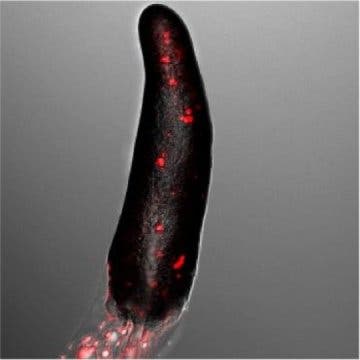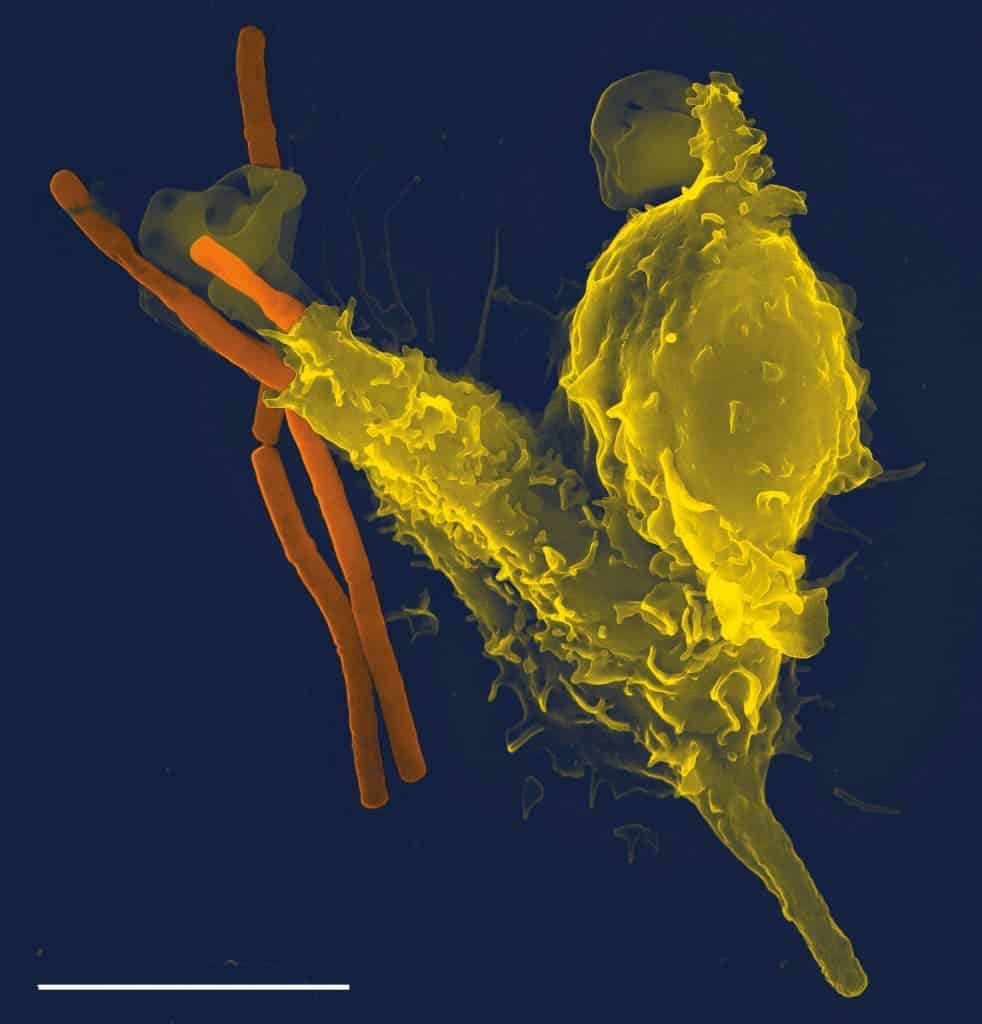Our immune system’s phagocytes use two mechanisms to protect our bodies: they attack and destroy pathogens either internally or externally. These mechanisms are well-studied and established in medicine, but it was believed that only humans and other complex organisms possess such defense mechanisms.
Microbiologists from the University of Geneva Switzerland (UNIGE) have now stumbled upon a species of social amoeba living in the soil of temperate forests that also employs these defensive mechanisms, and has been doing so for over a billion years. Since the amoebas employ defensive behaviors similar to the ones seen in human cells while being genetically modifiable, researchers plan to study them to understand and fight genetic diseases of the immune system.
Working in tandem with researchers from Baylor College of Medicine in Huston, USA, Professor Thierry Soldati’s team studies the social amoeba Dictyostelium discoideum. These predatory amoebas are usually very good at finding enough to eat by themselves, but when food is short they do something astonishing.
Amoeba slug
Close to 100,000 amoebas will come together into a single “mini animal,” known as a slug. This them turns into a “fruiting body” made up of a mass of spores and a central stalk. The spores can survive without food until the wind or another force carries them to a new area where they can germinate and find breakfast.

This is a slug made up of social amoebae. Reactive oxygen species produced by the sentinel cells, which are necessary for the generation of DNA nets that defend the slug, are colored in red.
Image credit Thierry Soldati, UNIGE.
In this way, the amoebas assure their survival through trying times. But it does come at a cost: around 20% of cells sacrifice themselves to create the stalk and 80% will become spores. To make sure the amoebas cash out on their investment, up to 1% of amoebas retain their phagocytic functions.
This 1% is what got the team’s science-bone a’tingling.
“This last percentage is made up of cells called “sentinel” cells. They make up the primitive innate immune system of the slug and play the same role as immune cells in animals,” explains Thierry Soldati, last author of the study.
“Indeed, they also use phagocytosis and DNA nets to exterminate bacteria that would jeopardize the survival of the slug. We have thus discovered that what we believed to be an invention of higher animals is actually a strategy that was already active in unicellular organisms one billion years ago,”
Our body’s bodyguards

Scanning electron micrograph of a neutrophil phagocytosing anthrax bacilli (orange). Photo by Volker Brinkmann.
Ok, let me give you some background. Phagocytes are one kind of immune-system cells floating around in your body. They get their name from the process of phagocytosis, which describes the act of one cell enveloping another then “digesting” it. This is done using reactive species of oxygen (hydrogen peroxide, ozone, etc) synthesized by the NOX2 enzyme.
But this hinges on the ability of a cell to envelop the pathogen. If the invader is too large to be captured, cells instead resort to the external attack method. They eject genetic material in the form of DNA that forms sticky, toxic nets called “neutrophil extracellular traps” (so the acronym for these nets is literally NETs — very handy.)
Armed with these NETs, phagocytes can bite more than they chew — pathogens get covered in these, are attacked by the same oxygen species and die, allowing our immune cells to take out threats much larger than themselves.
But immune systems don’t always work as intended. Patients suffering from granulomatous disease (CGD), for example, can’t express the functional NOX2 enzyme, so their phagocytes can’t destroy the pathogens they find. Because their cells can’t take out the invaders, they suffer from a host of recurring infections.
The team’s discovery might help researchers understand such immune system deficiencies in humans. By genetically modifying Dictyostelium discoideum, UNIGE microbiologists are able to conduct experiments on the mechanisms of their innate immune system. The team hopes that this microorganism can therefore serve as a scientific model for the research on defects in these defense processes, opening the way to possible treatments.
The full paper, titled “Social amoebae trap and kill bacteria by casting DNA nets” has been published online in the journal Nature Communications and can be read here.









